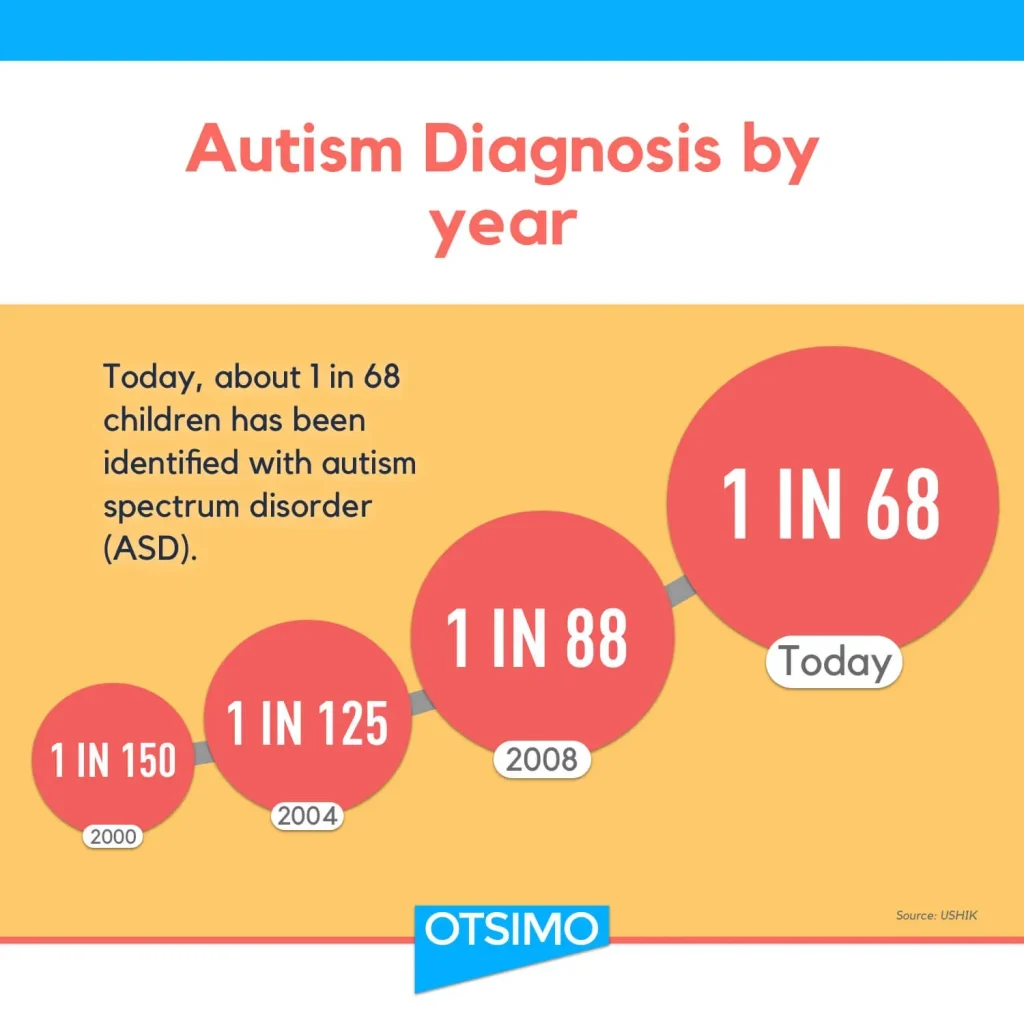Autism diagnosis is undergoing a transformative shift as researchers uncover new insights that revolutionize our understanding of the condition. Recent studies indicate that autism is not a single disorder, but rather comprises distinct types of autism, which can significantly affect early autism diagnosis and intervention strategies. By identifying specific autism symptoms associated with each type, scientists aim to enhance the accuracy of diagnosis and tailor support to individual needs. Furthermore, ongoing autism research is delving into the genetic factors in autism, revealing how these elements interact with developmental milestones and behavioral traits. This groundbreaking approach not only opens doors for personalized treatment plans but also empowers families with crucial knowledge about their children’s unique traits and potential challenges.
The landscape of autism assessment is changing dramatically, with fresh methodologies being explored to discern varying forms of the disorder. What was once seen as a singular diagnosis is now recognized as a spectrum, showcasing a diverse range of behaviors and developmental patterns. Enhanced understanding of the nuances within autism helps illuminate the complexities of early detection and appropriate care. This shift promises to improve how we conceptualize autism, offering new perspectives on the observable behaviors and genetic influences that contribute to the condition. By fostering a deeper comprehension of these variations, parents and professionals alike can better navigate the paths of diagnosis and support.
Understanding the New Types of Autism
Recent breakthroughs in autism research have revealed that autism is not a monolithic condition but instead comprises four distinct types. Each type exhibits unique traits, risks, and developmental milestones, showcasing the complexity of autism spectrum disorder (ASD). For instance, the most prevalent type represents 37 percent of cases and includes children who struggle with social interactions and repetitive behaviors yet demonstrate no significant early developmental delays. This distinction is crucial, as it supports tailored interventions that could lead to more effective treatments and personalized care.
The second type, labeled “Moderate Challenges,” constitutes approximately 34 percent of those diagnosed with autism. Children within this group also exhibit social and behavioral difficulties, but without the heightened risk for secondary mental health issues that accompany the first type. The differentiation among the types of autism aids not only in understanding individual experiences but also in recognizing genetic factors in autism that can lead to targeted research and early autism diagnosis, thereby potentially improving outcomes for affected individuals.
The Importance of Early Autism Diagnosis
Early autism diagnosis plays a pivotal role in the developmental trajectories of children on the spectrum. The timely identification of autism symptoms allows for the implementation of interventions that can significantly alter a child’s future. Studies indicate that children receiving early treatment exhibit improved communication skills, social interaction, and educational outcomes. Furthermore, early diagnosis can prevent the onset of secondary mental health conditions, such as anxiety and depression, particularly in those with higher risks, such as those in the most common autism type.
Additionally, recognizing the signs of autism at an early age enables families to understand their child’s needs better. For instance, as outlined by researchers, each subtype of autism may present different challenges. Families informed of their child’s specific type can create tailored support structures at home and advocate for appropriate school resources. This proactive approach not only highlights important developmental milestones but also emphasizes the significance of autism research in revealing patterns that could lead to quicker diagnosis and better care strategies.
Genetic Factors in Autism Development
The recent findings regarding genetic factors in autism underscore the biological underpinnings that contribute to the disorder’s expression. Experts noted that the most common type of autism correlates with specific genes associated with late brain development, which may contribute to delayed diagnoses. Understanding these genetic markers is vital as they could inform future research directions and diagnosis methodologies, ultimately pointing to a more comprehensive view of autism’s origins.
Furthermore, the study highlighted the presence of de novo mutations in the ‘Broadly Affected’ group, suggesting a strong genetic preload that can influence the severity of autism symptoms. Such knowledge not only helps in enhancing current diagnostic practices but also puts into perspective the complexity of autism as a genetic and environmental interplay. Continued exploration in autism genetics is essential—it’s vital for developing preventative strategies and targeted treatment options aimed at various autism types.
Navigating Autism Symptoms
Understanding autism symptoms is critical for both parents and healthcare providers to facilitate early identification and tailored support. The researchers identified 233 traits linked to autism, including aspects of language development and cognitive function. Recognizing these symptoms allows for more informed discussions about a child’s development and the potential for accompanying mental health conditions.
For example, children identified in the ‘Mixed ASD with Developmental Delay’ subtype may require different types of educational support versus those in other categories. By categorizing symptoms and understanding how they manifest across different types, families can seek out resources or therapies that are most likely to benefit their child’s unique developmental path.
The Broader Impact of Autism Research
The implications of recent autism research extend far beyond academic circles, influencing public health policies and early intervention programs. With autism being reported at an increasing rate, particularly in England, understanding its various types can aid in addressing concerns of overdiagnosis and improving the screening process. The identification of four types may lead to more nuanced diagnostic criteria that can help differentiate true cases of autism from those that are less clear-cut.
Moreover, the emphasis on genetic factors provides a basis for further autism research initiatives and funding, which can revolutionize how autism is perceived and treated in society. As the understanding of autism evolves, so too will the tools available for diagnosis and support, ensuring that individuals on the spectrum receive the comprehensive care and recognition they deserve.
Addressing Overdiagnosis in Autism
Concerns regarding overdiagnosis are pivotal in discussions about autism awareness in recent decades. The research highlights a dramatic increase in autism diagnoses, often attributed to heightened awareness and better screening methods. However, this surge raises questions about the rigor of diagnostic criteria and whether it adequately reflects the varied presentations of autism. As more children are identified as on the spectrum, it becomes crucial to maintain a balance between awareness and accurate diagnosis.
Efforts to mitigate overdiagnosis include refining the understanding of different autism types, thereby aiding clinicians in making more informed evaluations. This not only helps to ensure that those who genuinely need support receive it but may also alleviate pressure on healthcare systems that can become overwhelmed with inflated autism rates. As awareness grows, so does the need for precise and equitable diagnostic practices.
Future Directions in Autism Spectrum Disorder Research
The future of autism spectrum disorder (ASD) research is likely to be shaped by the findings surrounding its classification into distinct types. This conceptualization could pave the way for advanced studies that explore the interrelations among genetic factors, environmental influences, and behavioral symptoms. The hope is that, as more research is conducted, it can lead to innovations in both diagnosis and treatment, allowing for more personalized care that aligns with individual needs.
Moreover, the ongoing exploration of autism’s complexities promises to reveal further sub-types and the underlying mechanisms that contribute to the condition. Understanding these factors not only enriches our knowledge base but also strengthens community support frameworks and educational advocacy. As researchers continue to investigate the genetic and behavioral components of autism, the potential for groundbreaking findings increases, ultimately benefiting individuals and families affected by autism.
The Role of Parents in Autism Advocacy
Parents play a crucial role in the advocacy and support of their children with autism, especially in light of the recent research delineating different types of autism. By understanding the unique traits and needs associated with their child’s autism subtype, parents can become informed advocates, seeking appropriate educational resources and therapeutic interventions tailored to their child’s developmental stage.
Additionally, parents can foster community awareness by sharing their experiences and insights regarding the varying symptoms of autism. Their voices help shape perceptions around autism and can lead to improved understanding and resources within schools and healthcare systems. This advocacy is essential not only for individual children but also for broader societal change regarding how autism is diagnosed and treated.
Understanding Mental Health Challenges in Autism
Among the critical insights from the recent research is the recognition of the mental health challenges that accompany certain autism types. For instance, children in the most common group are more susceptible to conditions like ADHD and anxiety, highlighting the need for vigilant monitoring and supportive strategies. Identifying these risks early can significantly benefit families, enabling timely interventions that promote good mental health alongside autism management.
Moreover, understanding the link between autism and mental health underscores the complexity of ASD and the necessity for integrative care approaches. By aligning mental health support with autism treatments, healthcare providers can offer comprehensive care that addresses the whole child, ensuring they develop both socially and emotionally. This holistic perspective is vital for facilitating healthier, more fulfilling lives for individuals on the autism spectrum.
Frequently Asked Questions
What are the different types of autism based on recent autism diagnosis research?
Recent research identifies four distinct types of autism: the most common type shows difficulties with social skills and repetitive behaviors without early developmental delays; the second type, ‘Moderate Challenges,’ involves similar behaviors but no elevated risk for mental health problems; the third type encompasses ‘Mixed ASD with Developmental Delay,’ where children have typical milestones but show a combination of autism traits; the final type, ‘Broadly Affected,’ represents the smallest group, marked by severe symptoms and a high risk for psychiatric conditions.
How can early autism diagnosis impact treatment options for children?
Early autism diagnosis is crucial as it allows for tailored intervention strategies that can address specific traits associated with each subtype of autism. Knowing which type of autism a child has can help parents and professionals identify appropriate treatments, monitor developmental milestones, and recognize potential mental health issues early on.
What are the common symptoms associated with autism diagnosis?
Common symptoms linked to autism diagnosis include difficulties in social interaction, repetitive behaviors, variations in communication skills, and developmental delays. The specific manifestation of these symptoms can vary significantly among individuals, depending on the defined type of autism they fall under.
What role do genetic factors in autism play in diagnosis?
Genetic factors in autism significantly influence the diagnosis by providing insights into biological mechanisms underlying the condition. Recent studies have identified specific genetic changes associated with different types of autism, which can help in making an earlier diagnosis and determining tailored support strategies.
What is the significance of autism research in improving diagnostic methods?
Autism research is vital in enhancing diagnostic methods, as it breaks down the one-size-fits-all approach and acknowledges the diversity of autism presentations. By understanding the various types of autism, researchers can refine screening processes, facilitate earlier diagnoses, and develop personalized therapies that cater to the unique needs of each individual.
| Key Points | Details |
|---|---|
| Nature of Autism | Autism is not a single condition but is classified into four distinct types. |
| Common Challenges | The most common type accounts for 37% of cases and involves socializing difficulties without developmental delays. |
| Moderate Challenges | 34% of cases experience similar issues but with a lesser risk of mental health problems. |
| Mixed ASD with Developmental Delay | About 20% display delayed milestones like walking and talking, typical autism behaviors without mental health issues. |
| Broadly Affected | 10% show severe symptoms and high developmental delays, often linked with psychiatric conditions. |
| Genetic Insights | Understanding genetics is crucial for accurate diagnoses and personalized care, as emphasized by researchers. |
| Future Implications | Identifying subtype allows families to better prepare for potential symptoms and treatment plans throughout a child’s development. |
| Overdiagnosis Concerns | Rising concerns in England over potential overdiagnosis due to heightened awareness and inconsistent assessment standards. |
Summary
Autism diagnosis is evolving, as new research highlights four distinct types of autism rather than viewing it as a singular condition. This change aims to facilitate earlier and more tailored support for children. By understanding the various subtypes and their associated traits, risks, and causes, families can better navigate the complexities of autism. As our knowledge grows, the goal is to enhance diagnosis accuracy and improve treatment outcomes for affected individuals.



